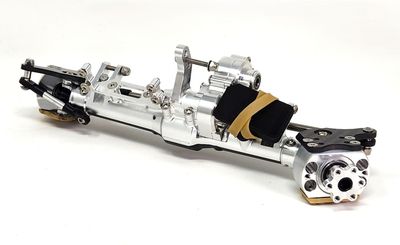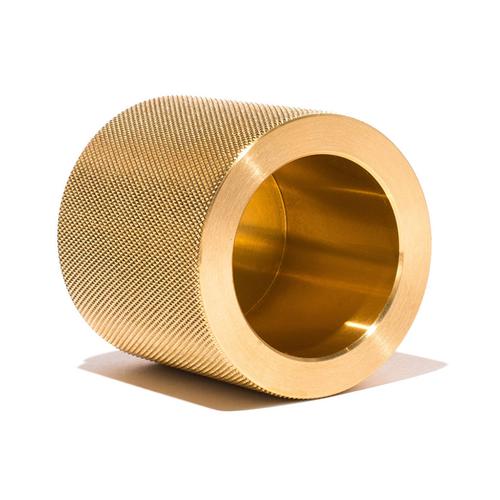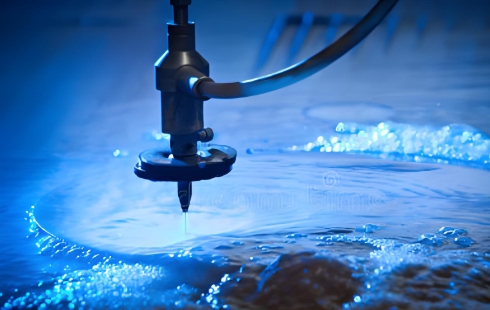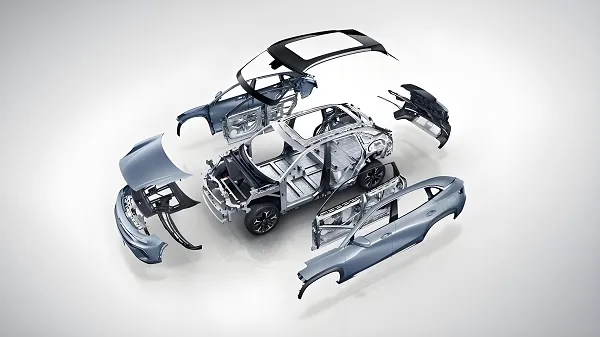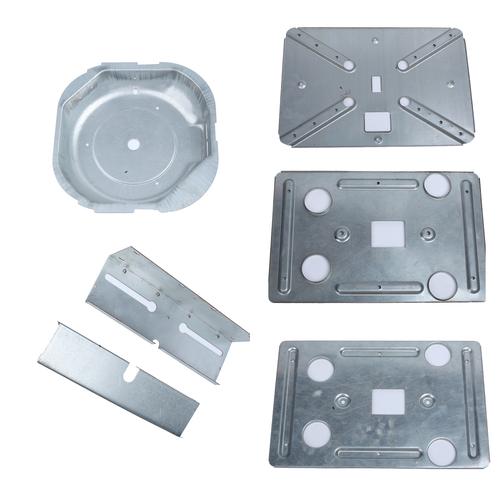
Answer
Extended Explanation: In-Depth Analysis of CNC Stamping Process
- Motion Control: Servo motors drive the slider (press main shaft) along preset trajectories with positioning accuracy up to ±0.01mm, supporting high-speed stamping (200–2000 strokes/min).
- Pressure Regulation: Hydraulic or servo presses dynamically adjust pressure (5–5000 tons) according to process requirements, with sensors monitoring load in real time.
- Feeding & Positioning: CNC feeders (e.g., roller-type, pneumatic) transport sheets precisely per programs, with step accuracy ±0.05mm, supporting automatic loading of coil and sheet materials.
|
Die Type
|
Technical Features
|
Application Scenarios
|
|
Single-Operation Die
|
Completes one operation (e.g., punching, blanking) in one stroke; simple structure, easy to replace.
|
Small-batch production of simple parts.
|
|
Compound Die
|
Performs multiple operations (e.g., blanking + punching) in the same station; high efficiency but complex structure.
|
Medium-complexity part processing.
|
|
Progressive Die
|
Completes blanking, bending, drawing, etc., in multi-stations sequentially; automatic sheet feeding for full-process automation.
|
Mass production of precision parts (e.g., electronic terminals).
|
|
Die Materials
|
Punches commonly use Cr12MoV (hardness 58–62HRC); dies use cemented carbide (YG8) or high-speed steel (SKH-9).
|
Processing stainless steel and high-strength steel.
|
|
Comparison Item
|
CNC Stamping
|
Traditional Stamping
|
|
Positioning Accuracy
|
±0.01–0.1mm
|
±0.1–0.5mm
|
|
Die Change Time
|
5–15 minutes (quick die change system)
|
30–60 minutes
|
|
Automation Level
|
Full-process programmable control, supports unmanned production
|
Manual adjustment-dependent
|
|
Process Flexibility
|
Quick product model switching (via program import)
|
Requires die redebugging
|
- Servo Press: Driven by servo motors, with programmable force-stroke curves; suitable for precision bending and shallow drawing, low noise (≤85dB).
- Hydraulic Press: Provides pressure via hydraulic systems, suitable for large-tonnage processing (>500 tons), e.g., automotive frame stamping.
- High-Speed Press: Stamping frequency >300 strokes/min, equipped with automatic feeding for continuous production of micro-parts (e.g., mobile phone connectors).
- NC Roller Feeder: Driven by servo motors to clamp sheets with rollers, suitable for coil feeding, feeding speed 50–500mm/s.
- Pneumatic Feeder: Uses air cylinders to position grippers, simple structure, suitable for thin sheets (t≤2mm) in small batches.
- Robot Feeding: Six-axis robots grasp sheets, supporting positioning of irregular materials with higher flexibility (e.g., aerospace).
- Laser Centering Instrument: Real-time detects die installation position, alarms automatically when deviation >0.05mm.
- Pressure Sensors: Monitor load fluctuations during stamping, trigger emergency stop at 10% overload.
- Vision Inspection: Cameras scan stamped parts to identify defects like missing corners and burrs (recognition rate ≥99%).
- Programming Software: Uses AutoForm, Dynaform for process simulation, generates G-code or special NC programs, supports parametric programming (e.g., setting bending angles, drawing depths).
- Production Management System: MES integrates equipment status, output data, and die life, monitors OEE (Overall Equipment Effectiveness, target ≥85%).
- Fault Diagnosis Software: Analyzes sensor data via AI algorithms to predict die wear (accuracy ≥90%), provides early replacement warnings.
- 3D Modeling: Uses UG, Pro/E for part design, highlighting precision requirements (e.g., hole spacing ±0.02mm) and surface roughness (Ra≤1.6μm).
- CAE Simulation: Simulates stamping via AutoForm, predicts cracking (FLD analysis) and wrinkling risks, optimizes die radii (r=3–8t) and blank holder force (50–200kN).
- Strip Layout Design: Plans operation sequences in progressive dies (e.g., punch positioning holes → blank contour → bend), improving material utilization (target ≥75%).
- Precision Machining: Uses slow wire EDM (accuracy ±0.005mm) for die edge processing, EDM for complex surfaces (e.g., automotive panel dies).
- Die Assembly: Uses CMM to check die clearances (uniformity ≤0.01mm), adjusts punch-die alignment via shims.
- Tryout Optimization: After first-piece production, measures dimensions (e.g., hole diameter 5.01mm vs design 5.00mm), compensates springback via NC program modification (e.g., reduce bending angle by 1°).
- Dimensional Inspection: CMM measures critical dimensions (e.g., bending angle 91° ,allowable deviation ±1°).
- Surface Inspection: scans burr height (requirement ≤0.05mm), roughness tester measures Ra value.
- Mechanical Testing: Tensile tester tests bending strength (e.g., stainless steel tensile strength ≥520MPa), hardness tester checks work hardening (HRB≤90).
- Plastic Sheets (ABS/PC): For instrument casing stamping, reduce stamping speed (50 strokes/min), require sharp die edges (R≤0.01mm).
- Composite Materials (Carbon Fiber Plates): Cold stamping forming, pressure control accuracy ±1%, nitrogen protection to prevent fiber damage.
- Deep Drawing: When h/d>0.5, require 2–3-stage drawing with intermediate annealing at 650℃ (steel), each drawing ratio decreasing by 10%.
- Micro-Hole Machining: For d<1mm, use cemented carbide punches (diameter tolerance ±0.002mm), stamping speed ≤50 strokes/min to prevent punch breakage.
- Causes: Feeding positioning errors, die wear, insufficient springback compensation.
- Solutions:
- Calibrate feeder servo motor encoders weekly, re-zero when error >0.03mm.
- Replace dies when edge wear >0.02mm, use TiN coating (life increased 3x).
- Build springback database, auto-adjust bending angle compensation by material (e.g., stainless steel +2°).
- Causes: Excessive blanking clearance, dull edges, insufficient lubrication.
- Solutions:
- Adjust clearance precisely by material thickness (e.g., t=1mm carbon steel, clearance 0.08mm±0.01mm).
- Inspect edge radius with after die change (requirement R≤0.02mm), grind with precision grinders when worn.
- Use special stamping oil (40℃ viscosity 15–25mm²/s), coating thickness 5–10μm.
- Causes: Insufficient blank holder force, worn die positioning surfaces, poor springback control.
- Solutions:
- Install pressure sensors to monitor blank holder force, stop automatically at <90% target.
- Regularly check die positioning surface roughness (Ra≤0.4μm), repair with hard chrome plating when worn.
- Use laser angle measurement on CNC benders, calibrate bending angle every 50 pieces (compensation accuracy ±0.3°).
- Causes: Too small drawing ratio, insufficient die radius, poor lubrication.
- Solutions:
- First drawing ratio m≥0.6 (steel), subsequent m≥0.85, optimize blank shape via CAE simulation.
- Die radius r_d≥6t, precision-machined by CNC lathe (accuracy ±0.01mm).
- Apply solid lubricant (molybdenum disulfide) to flange area, reduce friction coefficient to <0.1.
- Process: 0.1mm thick phosphor bronze sheets, 8-station progressive die stamping: punch pilot holes → blank terminal contour → bend → cut.
- Precision: Terminal spacing ±0.03mm, bending height ±0.02mm, 100% full inspection via vision system.
- Efficiency: Stamping speed 300 strokes/min, daily output 500,000 pieces per line, material utilization 82%.
- Part: Inner door panel (1.5mm galvanized steel), 5-operation compound die: drawing → trimming → punching → bending → flanging.
- Equipment: 2000-ton servo press with robot loading/unloading, die change time ≤10 minutes.
- Technology: Hot stamping of boron steel heated to 900℃, quenched strength 1500MPa for A-pillar reinforcement.
- Process: 0.5mm silicon steel sheets, high-speed press (500 strokes/min) for stator/rotor lamination with automatic riveting.
- Key Requirements: Slot shape accuracy ±0.02mm, burrs ≤0.03mm, core coaxiality ≤0.05mm after lamination.
- Advantages: 5x efficiency improvement over manual lamination, 10% reduction in iron loss.
- AI Process Optimization: Machine learning analyzes historical data to auto-recommend parameters like blanking clearance and blank holder force, reducing tryout time by 30%.
- Digital Twin: Real-time stamping process simulation, predicts die life (error ≤5%) for predictive maintenance.
- Unmanned Factory: Integrates AGV logistics, robot handling, and AI quality inspection for 24/7 fully automated production lines (OEE≥90%).
- Micro-Stamping Technology: Processes micro-parts (≤1mm, e.g., MEMS sensor components) with accuracy ±5μm, requiring nanoscale lubrication.
- Composite Precision Control: Integrates laser thickness measurement and fiber sensors for real-time thickness deviation compensation (≤±1%).
- Servo Retrofit: Replace traditional mechanical presses with servos, reducing energy consumption by 40% and noise by 15dB.
- Waste Recycling System: Automatically collects stamping waste, achieves metal recovery ≥95% via crushers and magnetic separators.
- Water-Based Lubrication: Replaces traditional oil-based lubricants, reducing VOC emissions by 80% to meet environmental regulations (e.g., REACH).
- Light Alloy Processing: Develops special dies for magnesium (AZ31) and titanium (TC4) alloys with PVD coating (hardness ≥2500HV).
- High-Strength Steel Stamping: Develops cold stamping processes for hot-formed steels (>800MPa), solving springback via pre-stressed die technology.

